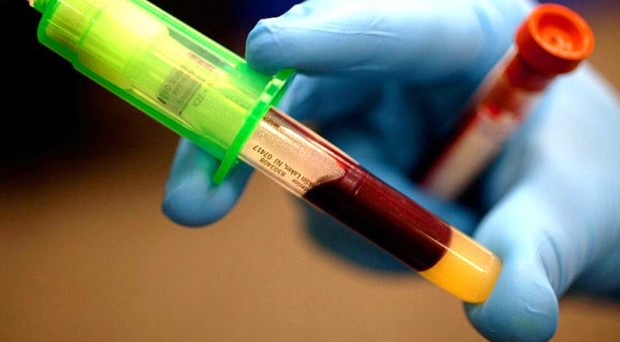
 Martin Hoenigl, MD, is an Infectious Diseases Fellow at the Medical University of Graz, Austria, and since June 2014 a Postdoctoral Fellow at the AntiViral Research Center at the University of California, San Diego (UCSD).
Martin Hoenigl, MD, is an Infectious Diseases Fellow at the Medical University of Graz, Austria, and since June 2014 a Postdoctoral Fellow at the AntiViral Research Center at the University of California, San Diego (UCSD).
Since joining UCSD his research focuses on Acute HIV infection, Testing costs and HIV prevention. His research has resulted to date in 82 Pub Med listed publications, the majority in leading authorship roles
HIV testing is a vital tool to keep the burden of infection under control. Can you tell us more about why you decided to perform this study?
HIV testing followed by prompt initiation of effective antiretroviral therapy (ART) is a highly effective biomedical prevention strategy (i.e. treatment as prevention). Diagnosis of HIV infection during the acute stage of infection is especially important since transient levels of extremely high titer HIV RNA during acute HIV infection (AHI) are associated with rapid immune destruction and significantly greater infectivity than during chronic infection.
HIV testing and counseling typically includes an assessment of recent behavioral risks, pretest counseling (in some settings), and rapid provision of HIV test results. Detection of HIV infection is often associated with at least transiently reduced risk behaviors and thus a decreased risk of HIV transmission.
However, HIV risk reduction counseling messages, currently included as part of routine voluntary counseling and testing, have not been shown to reduce high risk behaviors in those with negative test results.
The theory that clients could interpret a negative HIV test result as positive reinforcement that ongoing risk behaviors are not sufficiently risky to result in HIV infection, may provide an explanation for the failure of current risk reduction counseling.
In other words, reported risk behaviors without significant consequences may foster greater risk in the future. In particular, acute infection screening (i.e. nucleic acid amplification testing) provides HIV status information related to very recent risk behaviors as well as greater certainty about a negative test result and may therefore aggravate this effect.
Repeated negative HIV test results over time may provide an unintentionally reassuring message that may ultimately contribute to higher HIV acquisition rates among repeat testers.
Thus, repeated negative HIV test results over time may provide an unintentionally reassuring message that may ultimately contribute to higher HIV acquisition rates among repeat testers. If true, this would have important public health implications, as there would be an urgent need for development of new and specific prevention efforts for men who have sex with men who repeatedly screen for HIV.
Studies testing this theory are missing, however. That’s why we decided to investigate the relationship between voluntary repeat HIV testing and sexual risk behavior in men who have sex with men undergoing AHI screening.
Is the approach towards HIV screening similar everywhere?
HIV screening strategies differ between different countries and settings. Overall, diagnostic testing for HIV is often initiated with a 4th generation immunoassay or an HIV rapid antibody test. While recent healthcare guidelines in the United States recommend 4th generation HIV testing to detect acute HIV infection (AHI) in hospital settings, screening for acute infection is still rarely performed in healthcare settings in Europe, Africa and other continents.
In Europe, HIV screening is performed in some healthcare settings, mostly consists of HIV antibody testing only, and therefore fails to detect AHI.
In contrast to healthcare settings in the United States, field-based testing programs all over the world generally rely on point-of-care rapid HIV antibody testing only, with specific AHI testing limited to persons presenting with signs and symptoms consistent with an acute retroviral syndrome.
The effectiveness of such a strategy is limited, however, as only a proportion of individuals with AHI present with signs and symptoms.
Could you explain what the main findings of your study were?
Strikingly, our results may suggest that the level of expression of risk taking may be associated with the perceived message associated with HIV counseling and testing.
Our main finding was that repeat acute HIV infection screening was independently associated with an increase of risk behaviors between the baseline and the last test. Strikingly, our results may suggest that the level of expression of risk taking may be associated with the perceived message associated with HIV counseling and testing.
That is, higher rates of behavioral risk are reported in persons who test for HIV more frequently. The causality of this association is unclear; does increased risk behavior lead to more frequent (and appropriate) HIV testing or does more frequent HIV testing give rise to increased risk behavior (i.e., negative test results may be interpreted as positive reinforcement that ongoing risk behaviors are not sufficiently risky to result in HIV infection)?
How might this impact future research in the field?
Future studies that assess causality are needed. Such information will be crucial to better understand the dynamics of risk taking behavior and frame HIV test counseling messages.
If it is found that rapid or immediate feedback of negative test results does actually reinforce high risk behavior, there would be an urgent need for development of new and specific prevention efforts for MSM who repeatedly screen for HIV, particularly if increasing risk behavior is documented.
These prevention efforts would need to be focused on the testing process and counseling itself. If the alternative is true (i.e. increased risk behavior leads to more frequent HIV testing), there would be a need for determining the actual drivers of risk behavior increase, in order to develop specific interventions.
One Comment